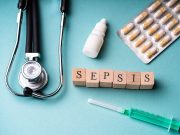Today’s Health News
Acute Cystitis Tied to Higher Risk for Urogenital Cancers
Risks especially high within three months of infection
Prevention Strategies Developed for Cardiovascular Manifestations of COVID
Strategies include implementing targeted cardiovascular rehabilitation for those with acute and long COVID
Diabetes Tied to Doubled Risk for Sepsis
Smoking, high blood sugar, and other chronic conditions heighten risk
Poor Mental Health Outcomes More Likely With Hyperemesis Gravidarum
Greatest relative risks seen for Wernicke encephalopathy, refeeding syndrome, postpartum depression, eating disorders
Alcohol Use Linked to Increased Dementia Risk
Monotonic increase in dementia risk with greater alcohol consumption seen in Mendelian randomization genetic analysis
Today’s Health News
Drop in Hospital Salaries, Staffing Reported After Private Equity Acquisitions
Private equity hospitals reduced ED and ICU salary expenditures after acquisition relative to control hospitals
Sprout Organics Widens Recall of Baby Food Pouches for Possible Lead
No illnesses have been reported, but parents should return affected products for a refund
Young Adult Cancer Survivors Face Higher Social Risks
Young adult cancer survivors have higher rates of mental distress, housing and food insecurity than peers with no cancer history
Mediterranean Diet Tied to Improvement in Psoriasis
Sixteen-week intervention showed significant improvement in Psoriasis Area and Severity Index
Older Adults Can Regain Well-Being
Almost one in four older adults with less-than-optimal well-being at baseline regained well-being over approximately three years
FDA Grants Accelerated Approval for First Treatment for Barth Syndrome
Forzinity helps improve strength of muscle to straighten the leg and works by improving mitochondria structure and function
Clinical Practice Guidelines Issued for Diabetes Distress
Assessing diabetes distress should form a routine part of care, according to authors
Personal Storytelling During Medical Training Aids Learning
Reported benefits include being more empathetic, prepared to support patients
Children With Autism More Likely to Experience Gastrointestinal Problems
Presence, number of GI symptoms linked to greater impairment in internalizing behaviors, sleep, communication, sensory processing, and repetitive behaviors
Oral Orforglipron Yields Greater Weight Reductions Than Placebo
Significant mean change in body weight from baseline to week 72 seen with various dosages of orforglipron compared with placebo among adults with obesity
















